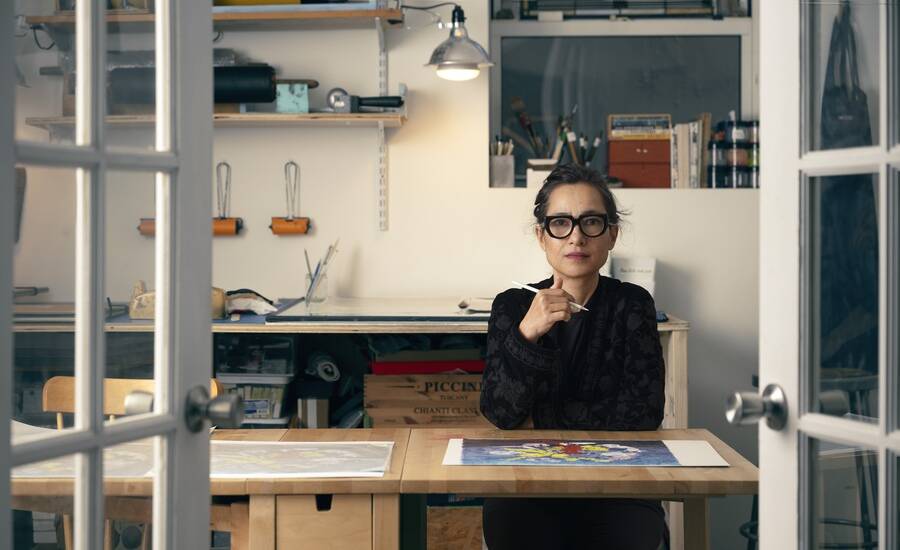
Shahzia Sikander tells us about a new limited edition print released to coincide with her Monacelli monograph
The Pakistani American artist has created a special edition called Her-Vimana to accompany the book, Collective Behavior.
You may not be familiar with the concept of vimāna, but they are mythological flying palaces or chariots described in Hindu and Jain texts and Sanskrit epics.
The Pakistani American artist Shahzia Sikander has referenced these flying palaces in a limited edition print, Her-Vimana, 2025, released alongside her new Monacelli monograph, Collective Behavior.
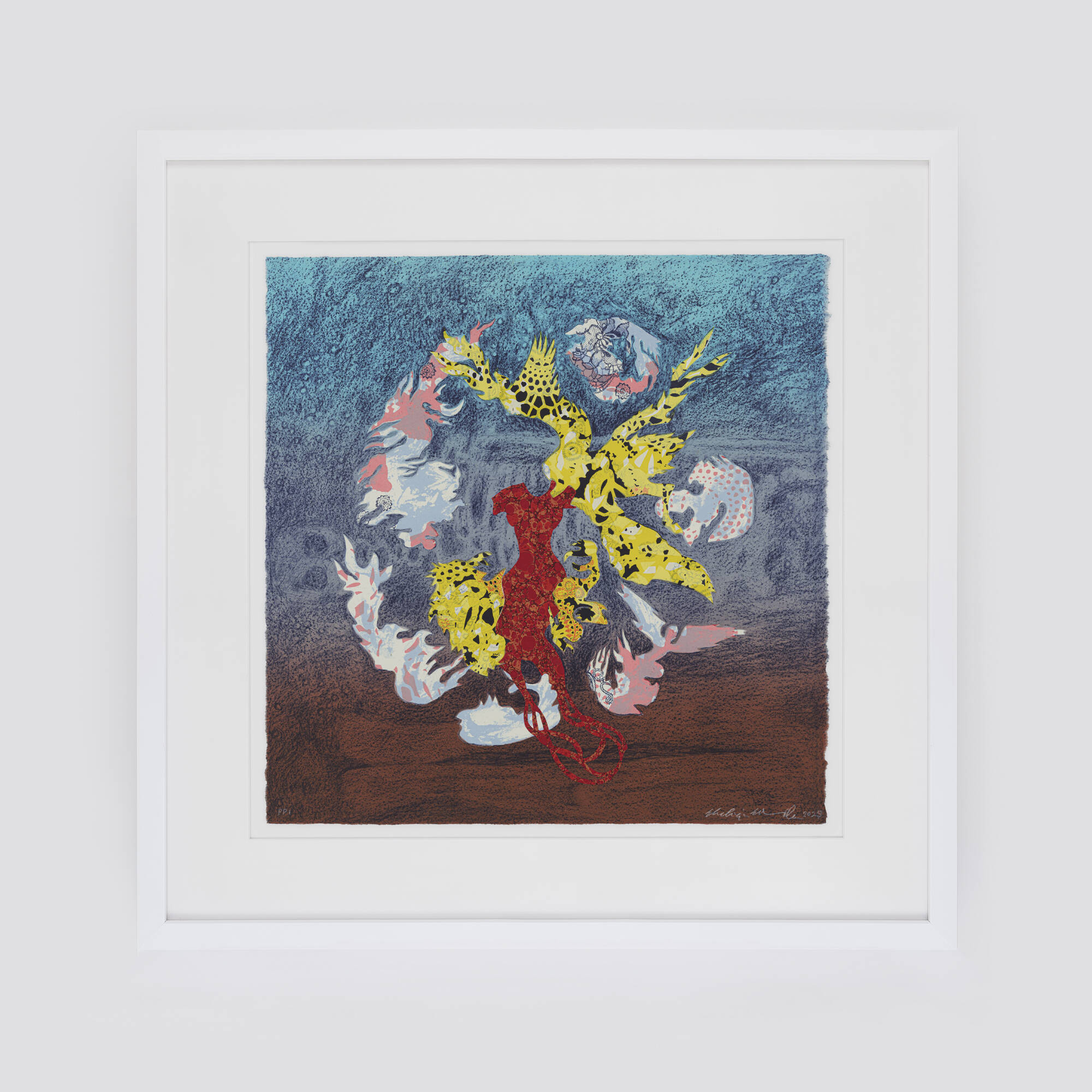 Shahzia Sikander - Her-Vimana, 2025 - Photography Garrett Carroll
Shahzia Sikander - Her-Vimana, 2025 - Photography Garrett Carroll
The release of this 8-colour lithograph with marbleized Chine-collé on Kitakata paper print also coincides with Sikander’s solo exhibitions at the Cincinnati Art Museum and the Cleveland Museum of Art, which both opened this month. The shows follow the premiere of the artist’s major survey exhibition, Collective Behavior, at La Biennale di Venezia in 2024.
The new lithograph exemplifies Sikander’s mastery of layered storytelling and vibrant imagery, and bursts with energy in a fusion of bold hues of red, yellow, blue, and earthy tones. Intricate details and flowing forms evoke themes of transformation, movement, and resilience, all of which are central elements of Sikander’s visual language.
The print measures 15.5 x 15.5 inches (39.37 x 39.37 cm) and is signed, numbered, and dated by the artist on the front. It is an edition of 40 and costs $1,500.
Each print is accompanied by a copy of her new Monacelli monograph, Collective Behavior.
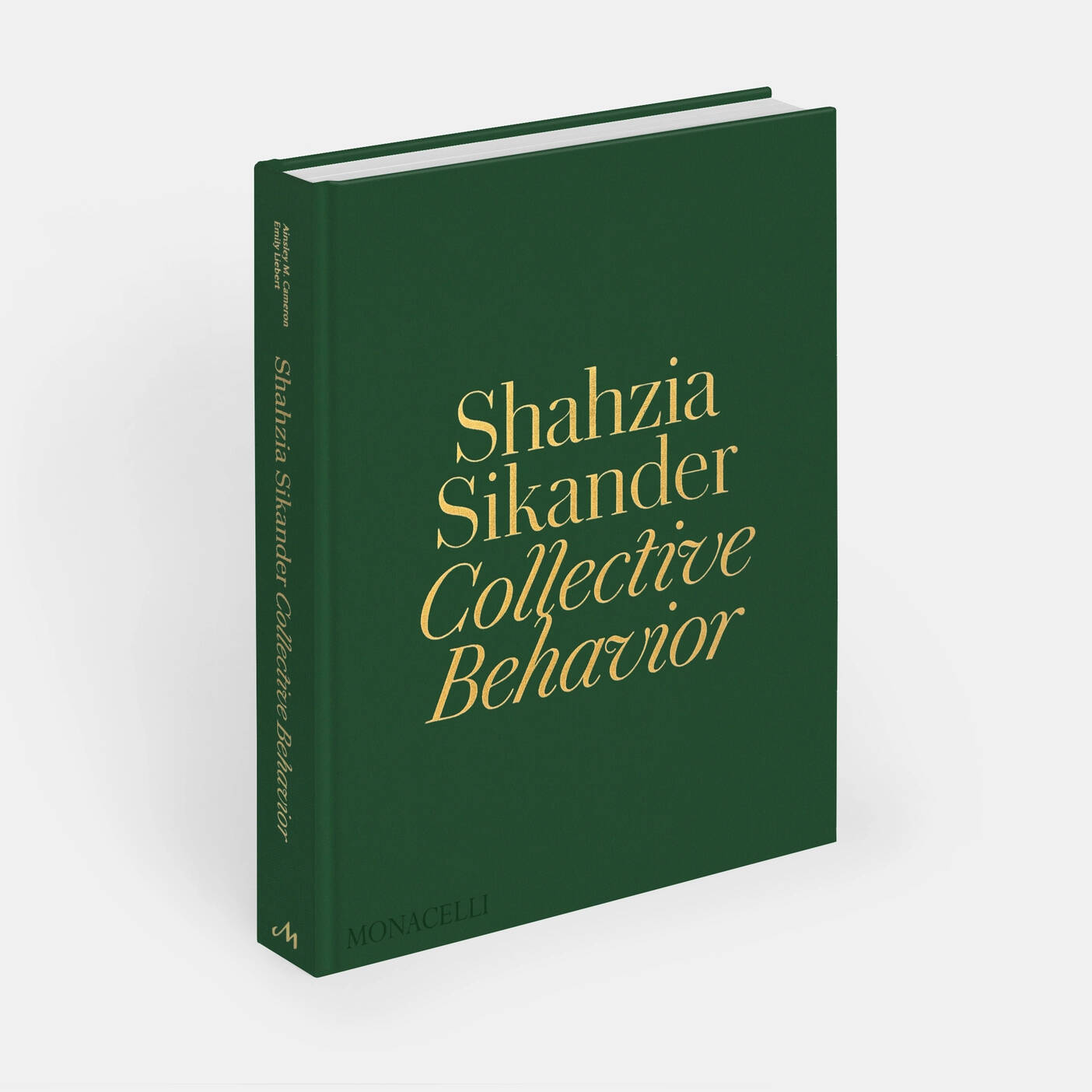
Sikander is widely celebrated for subverting Central and South-Asian miniature painting traditions into dialogue with contemporary international art practices and launching the form known today as neo-miniature. Her paintings, video animations, mosaics and sculpture explore gender, sexuality, racial narratives, and colonial histories.
“I aim to create something wondrous that inspires many possible associations, invites profound reflection, and generates difference,” she tells Phaidon.com.
Proceeds from the sale of Her-Vimana, 2025 will support the Cincinnati Art Museum and the Cleveland Museum of Art. On the eve of her two shows in Cincinnati and Cleveland, we asked her about Her-Vimana, 2025 and how it relates to her wider practice.
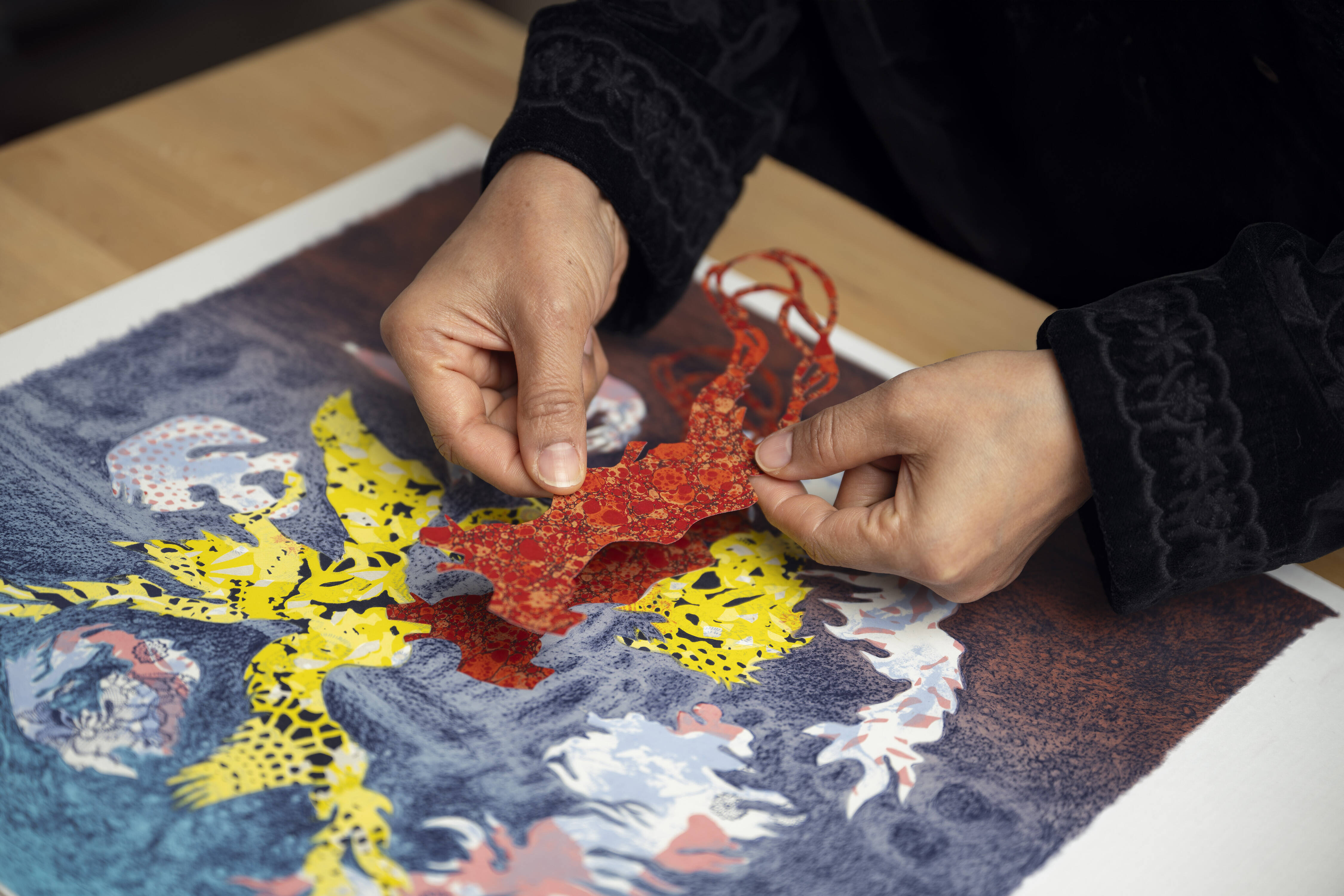 Shahzia Sikander with Her-Vimana, 2025 - photography Nir Arieli
Shahzia Sikander with Her-Vimana, 2025 - photography Nir Arieli
Vimāna are mythological flying palaces or chariots described in Hindu and Sanskrit texts. They have appeared across traditional and modern culture, but what do they mean to you personally? My interest in general in myth is in its function as an interpretive lens or a vehicle that carries a narrative over time. Flight and movement are associated in the mythic nature of storytelling and flight is a recurrent concept in my practice, especially its equation with imagination, buoyancy, ascendency, growth and change – all attributes that are in abundance around women-centered stories in my work.
Her-Vimana, 2025 showcases the feminine self-rooted form as an outlier, in red, mounted on birds, clouds, nature, abstract forms. She is in motion, moving in time and space. The movement and morphing are about embracing flux and uncertainty, and an inner turmoil as a defining feature of the creative spirit.
The subject matter here is an archetypal idea for the resilience of women who carry their roots wherever they go. The primary medium is lithograph and drawing. Drawing implies movement in time and across formats and mediums. It’s a means of imagining and bringing forms to life. Lace was used in this work to conceptualize a pattern. Lace holds significance to me. It is threaded, broken apart, and rebuilt and carries the weight of the feminine whether as a textile of childhood or memories of grandmothers.
Your colour palette is striking but also symbolic. How do you decide on colours, and what meanings do they carry in your work? Use of colour is often intuitive and context dependent. For example, the patina for ‘Promiscuous Intimacies’ and ‘NOW’, both sculptures in bronze, was intentionally in hues of red and ochres to highlight that classical painted statuary was polychromatic and not necessarily ‘lily white’ as often constructed over time in popular imagination.
‘Colour prejudice’, as historian Sarah Bond points out, ‘is how we colour or fail to colour classical antiquity, which is often a result of our own cultural values’. For me, connecting the patina to larger discussions on colour in classical sculpture further links the issue of classicism with American monuments and memorials, that are often revered as symbols of patriotism in their classicism aesthetic.
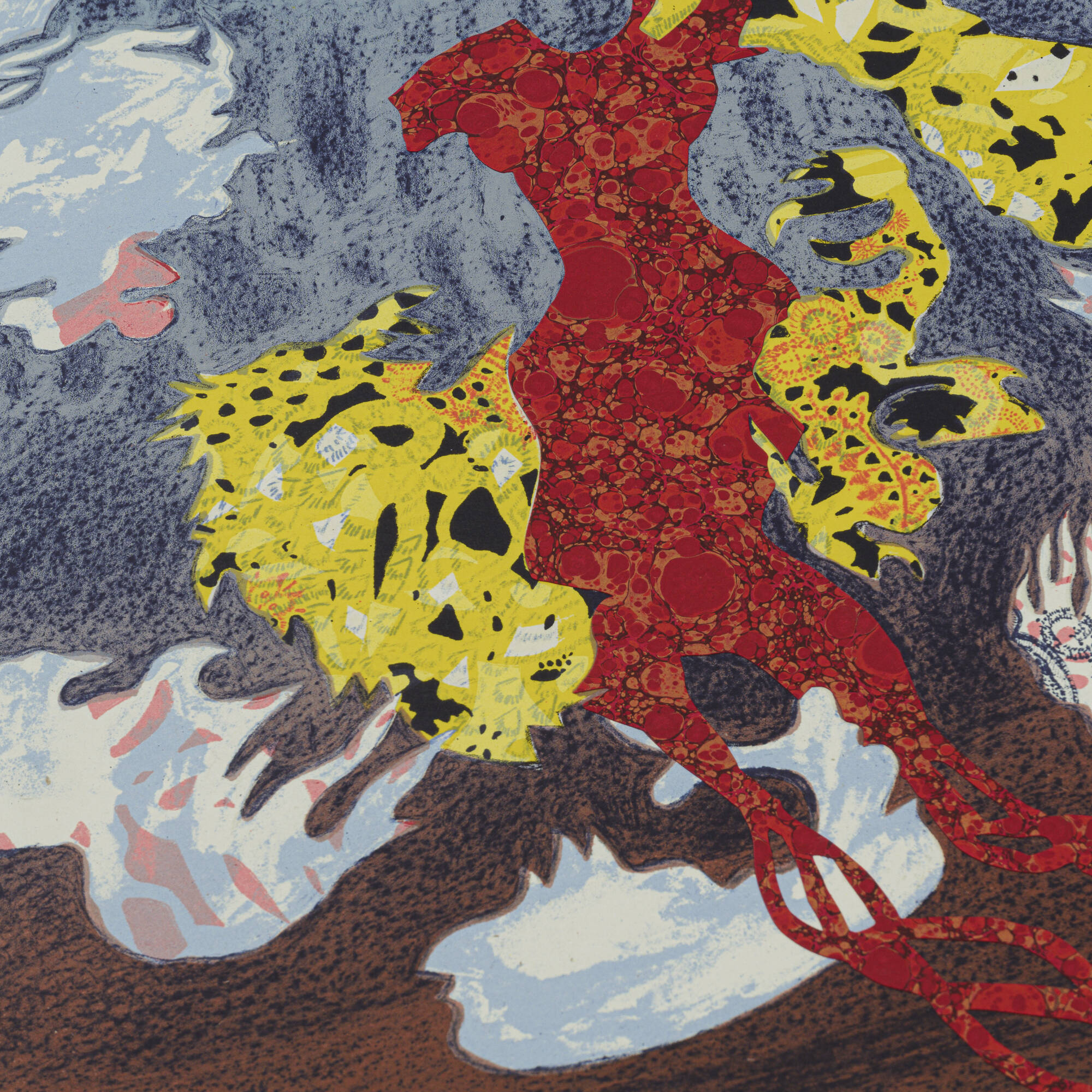 Her-Vimana, 2025 - Photography Garrett Carroll
Her-Vimana, 2025 - Photography Garrett Carroll
Many of your works incorporate movement, whether through swirling forms or digital animation. What draws you to this idea of fluidity? I work primarily in ink and gouache for my drawings and animation. Ink defies control and creates tension between control and surrender which becomes generative in forms and images born out of the tension of material and gesture. Kinetic forms in drawing as well as animation can echo or transport cyclical themes of struggle, whether illustrating the flux between figuration and abstraction, water and pulp, hand and digital, human and nature or women and power.
Tell us a little about your process. My artistic process starts with reading and research, engagement with community, and careful listening. Working across media, I often cull stories that center women; what is women’s sense of self versus someone else’s idea of us? I love digging for such societal shifts in the works of women writers, whether it’s bell hooks, Adrienne Rich, Fahmida Riaz or Solmaz Sharif.
I have spoken about my interest in radical feminist poets such as Audre Lorde, Angela Carter, Maya Angelou, Ismat Chughtai, Rebecca Solnit, Wisława Szymborska, Claudia Rankine, Robin Coste Lewis, Parveen Shakir and so many more. Such thinkers assist in new ways of thinking, reframing history and imagining new possibilities as part of the broader processes of transformation in a society and they offer counter-perspectives to our prevalent hyper-masculinized histories and ways of being. Their words reside in me, feed me, that is where I draw inspiration from.
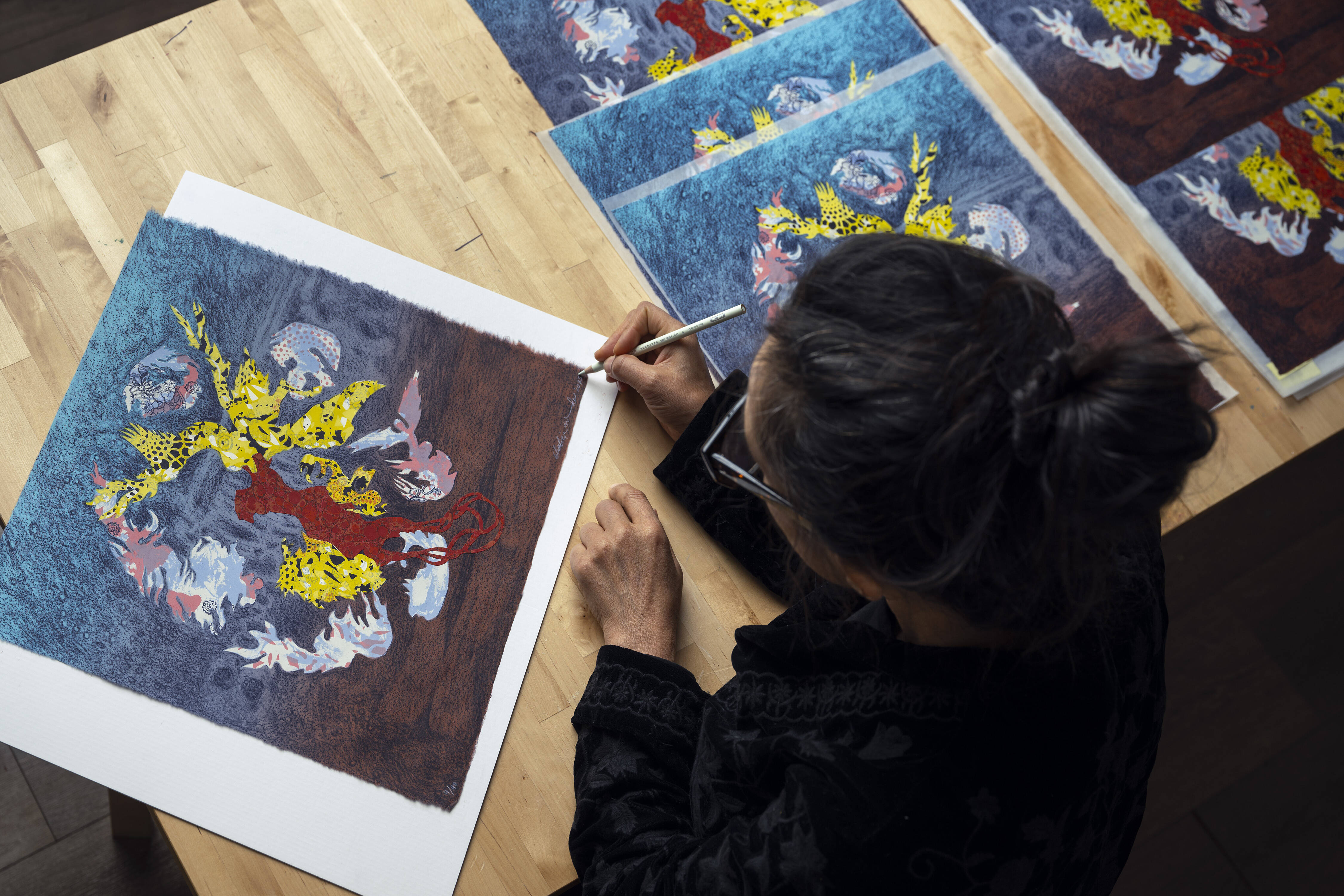 Shahzia Sikander signing editions of Her-Vimana, 2025 - Photography Nir Arieli
Shahzia Sikander signing editions of Her-Vimana, 2025 - Photography Nir Arieli
What role does spirituality or mythology play in your art? How does art become mythic in nature? What creates that transformation, time, reception, and inherent sublimity? These are lucid ideas to have in one’s head when thinking of creating protagonists that are allegorical or symbolic. I love expanding a repertoire of feminine characters born from reflection on women’s connections through memory, stories, collective consciousness.
Your work spans miniature painting, large-scale painting, digital animation and sculpture. How do these different mediums inform each other? There is not one way to tell a story. Neither is there just one story. If the story is changing, developing, growing and demands respect for its unpredictability, then the medium must respond accordingly.
I think of art as a language, a tool, a means to communicate. At its heart is a pursuit and fruition of an idea. Ideas can take shape in multiple forms. I am a research driven artist and need to move in many unanticipated directions.
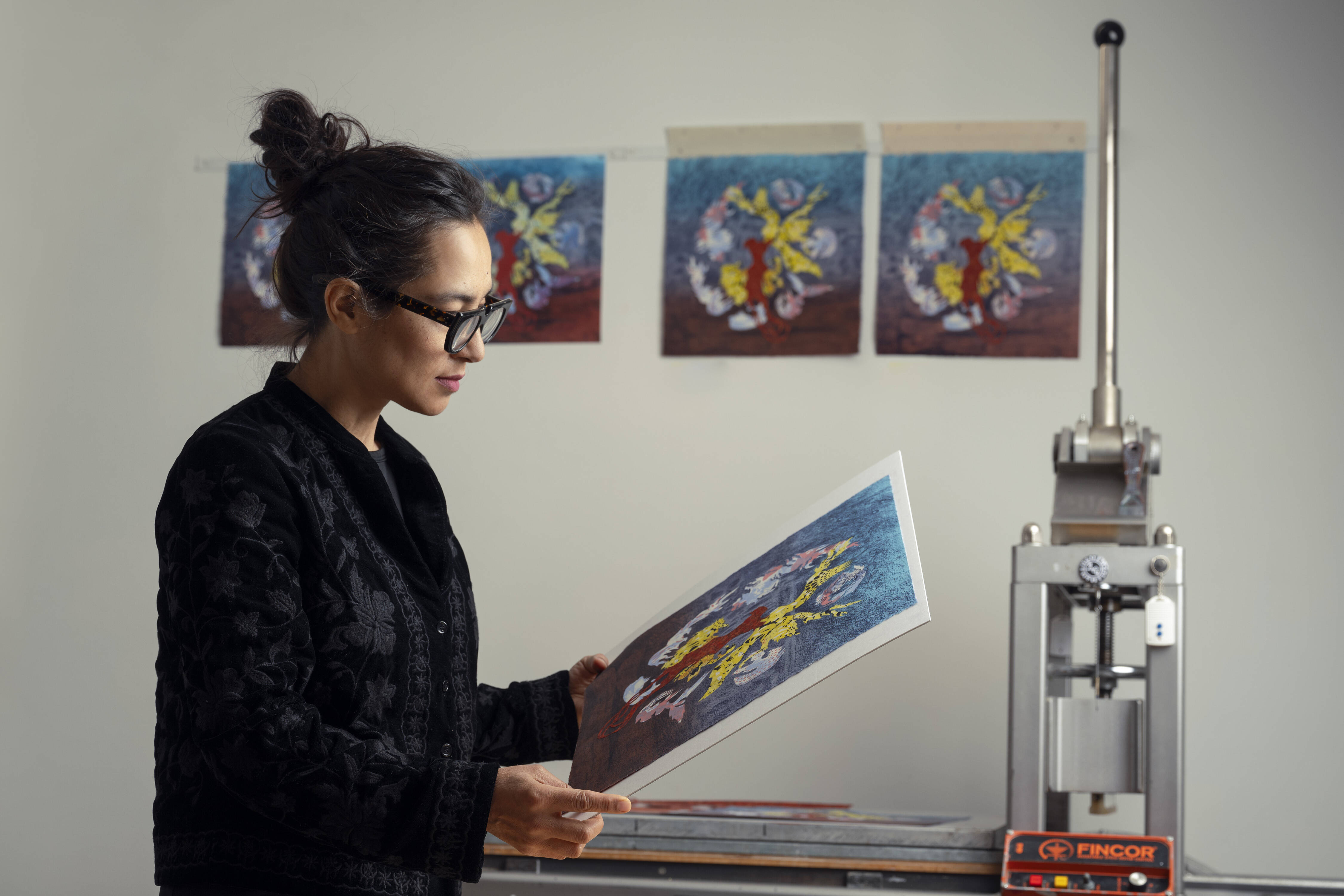 Shahzia Sikander with Her-Vimana, 2025 - photography Nir Arieli
Shahzia Sikander with Her-Vimana, 2025 - photography Nir Arieli
I see my use of drawing as writing, where fiction meets non, prose meets poetry, and is cross bordered, and cross cultural. The beating heart is drawing that carries the DNA of manuscript painting. My work continually seeks to reorient and reimagine these traditions. Claiming my place in proximity to my cultural heritage, which has been dispersed for years due to colonial legacy, is a form of reconfiguring boundaries. I have learned that tradition is not static and the discourse benefits from fresh perspectives.
My practice has always been about challenging and expanding these frameworks, whether the drawing becomes a libretto for an animation, or the pixel offers a bridge for mosaics. The connecting tissue remains the urgency of drawing invoking its multi-valence.
Take a closer look at Her-Vimana, 2025. And learn more about Shahzia Sikander in Collective Behavior, the new Monacelli monograph on the artist.